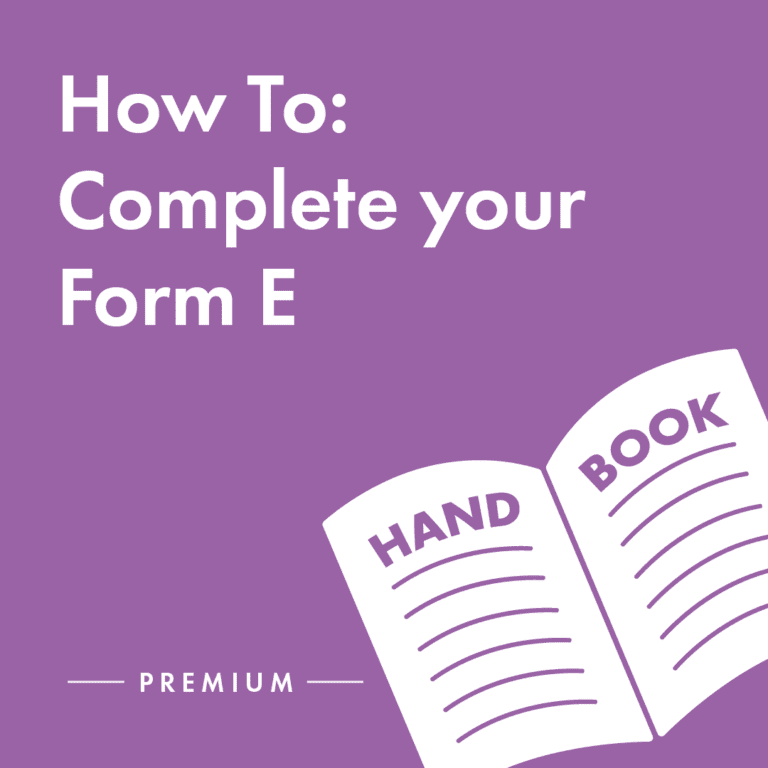Is a Form E compulsory in divorce?
A Form E is only compulsory if you need to go to court to reach a financial settlement in your divorce.
Although it isn’t mandatory, many couples choose to voluntarily complete the Form E as it gives a clear picture of the assets and liabilities of both people and helps them to make more informed decisions on how to separate their finances. Please note that if even if you agree a financial settlement amicably, you are still required to provide limited disclosure about your finances to each other and the court (by way of a D81 statement of information form) to be able to obtain a legally binding order.
 Download guide
Download guide
When do I need to complete my Form E during my divorce?
If you are within the court process, your Form E will need to be completed within the exact date stated in your Court timetable. When considering how long divorce takes, this will be 35 days before your initial Court hearing.
On the other hand, if you and your ex-partner are dealing with financial matters outside of court, you should agree to an exchange date (with your solicitors). Typically, the faster Form Es are exchanged, the faster your financial settlement can be finalised.

Hear what one of our experts says about completing a Form E
Judit Kerese, an associate at our Bristol law office, says:
“We recommend that parties obtain legal advice at an early stage, regardless of whether Form Es are completed on a voluntary basis or through the court process.
“Form Es require a large amount of information and supporting documents to be disclosed, and they are used as the backbone of the financial process. Solicitors can help to ensure that financial details are recorded appropriately and assist with the completion of the narrative sections, which can have an impact on the outcome of the financial settlement.
“It is imperative that Form Es are completed fully and accurately, and if someone is found to have deliberately lied or misrepresented information in their Form E, they could be found to be in contempt of court.”
If you would like legal advice when completing your Form E, reach out to our team today to be matched with the perfect lawyer for your circumstances.
Divorce Form E: Step-by-Step Process
Below, you’ll find details of some of the key information requested in the Form E. For more detailed information, check out our free guide on how to fill in a Form E!

1. Property valuation
The Form E asks for detailed information about any property you – or your partner – own, including:
- Current valuations, or any obtained in the last six months
- Up-to-date mortgage redemption statement for all applicable properties
2. Bank details
All bank accounts, building society accounts, and National Savings accounts held by either party over the previous 12 months (including joint accounts) must be fully detailed in Form E.

3. Investments
This includes:
- PEPs
- ISAs
- TESSAs
- National Savings
- Bonds
- Stocks
- Unit trusts
- Investment trusts
- Gilts
- Other quoted securities
4. Insurance
All life assurance (endowment) policies must be disclosed, even if they have no surrender value and pay out on death only. If they do have a surrender value, that should be included.

5. Assets
Details of all monies owed to a party must be included, as well as all cash sums held of more than £500. Similarly, all personal belongings individually worth more than £500 must be included too.
6. Debts
All liabilities should be disclosed, with details of who the debt is owed to and the amount. This includes:
- Credit/store cards
- Bank loans
- Hire purchase agreements
7. Capital gains
If capital gains tax might be payable, then it is good practice and expected that a calculation should be included in Form E, as clearly this affects the net value of the assets.

8. Business assets
There are detailed sections of Form E for any business assets or directorships. These need to be completed with supporting documentation.
9. Pensions
Full details of all pensions need to be provided in Form E, together with an up-to-date cash equivalent (CE). The CE is an important document that the court requires for the initial valuation of all pensions held.
As they can take quite a long time to obtain from the pension provider, it is good to ask for these at a very early stage to avoid any delay in the proceedings.
10. Income
Parties to divorce must also fully declare their income from all sources, whether from employment, self-employment, a partnership, or investments. The latter can include:
- Dividends
- Interest
- Rental income
- State benefits
- Pensions
- Any other source

11. Income needs
Each party will also be required in their Form E to set out a schedule of their monthly or annual income needs, both for themselves and for any children.
Plus, their ‘capital needs’, i.e. the funds they may require to purchase a property, replace a motor vehicle, or undertake essential repairs on their home.
12. Other relevant factors
Other narrative sections towards the end of Form E require details of any significant changes in assets or income over the preceding 12 months or in the following 12 months, any nuptial agreements or inheritance prospects, details of your standard of living during the marriage and any particular contribution (financial or otherwise) that should be taken into account.
Statement of truth
At the end of Form E, each party must sign a ‘statement of truth’ that confirms that the information they have given is a full, frank, clear, and accurate disclosure of their financial and other relevant circumstances. It includes a warning that anyone making a false statement on Form E may face contempt of court charges.
What happens when you complete your Form E?
Once you have finished, you need to arrange the exchange of Form Es with your ex-spouse, either directly or through your solicitor. The forms are usually exchanged simultaneously. If you are in court proceedings, you will also need to file your Form E with the court.
Are there other forms I need to complete during my divorce?
Yes, if you reach an agreement regarding finances by consent, you will need to fill in a Form D81 statement of information form to assist the judge in deciding whether your agreement is fair in the eyes of the court.

You don’t have to do it alone, our expert lawyers are here to help
It is advisable to seek independent legal advice from a family law specialist if you complete a Form E.
If the factors listed are all taken into account when completing a Form E, you are far more likely to avoid unnecessary delays, costs, and questions later on – a divorce lawyer can help you do precisely that.
Our divorce experts have helped many people with Form E and divorce settlements, let us take the stress away so you feel confident in your future. Reach out to Stowe Family Law today to find out more.
Latest advice
Newsletter Sign Up
Sign up for advice on divorce and relationships from our lawyers, divorce coaches and relationship experts.
Privacy Policy







